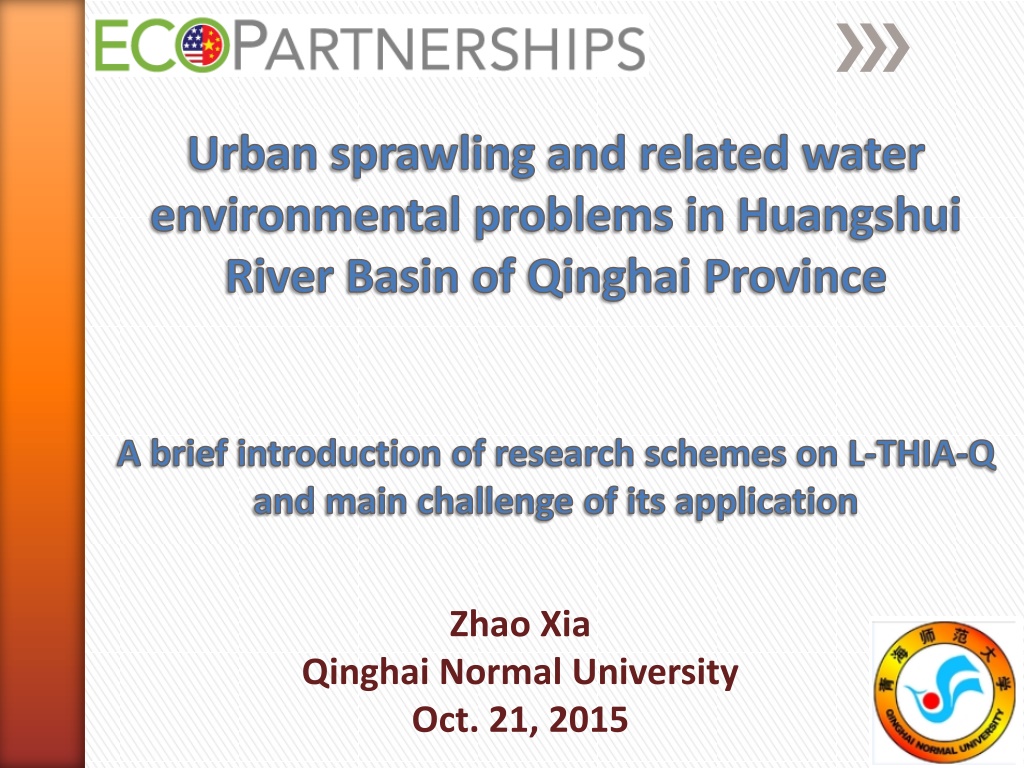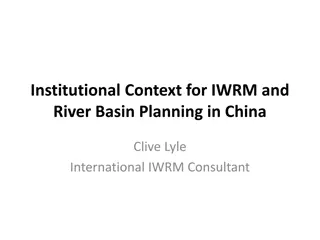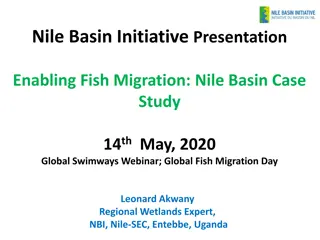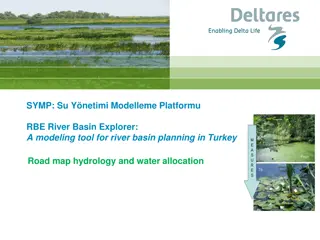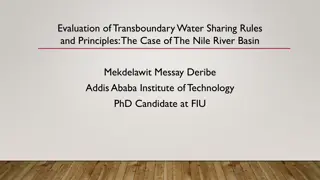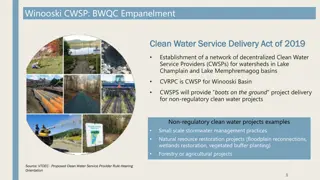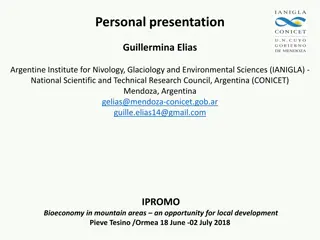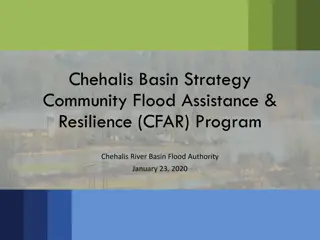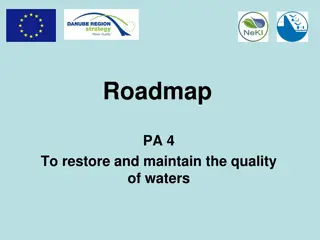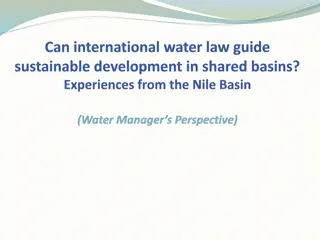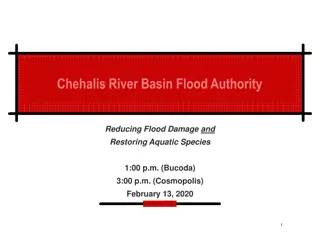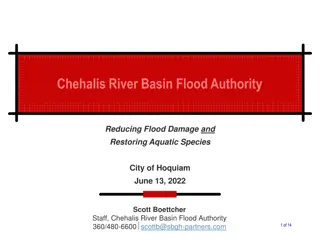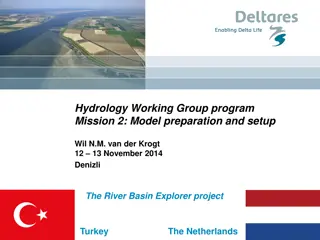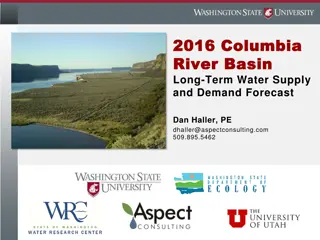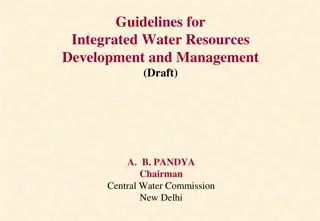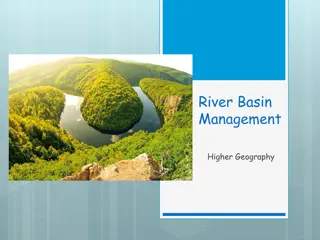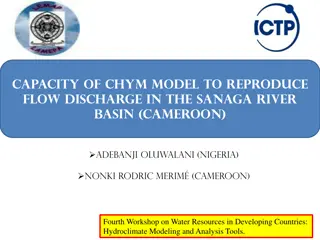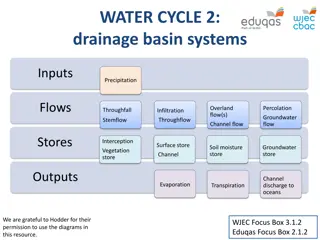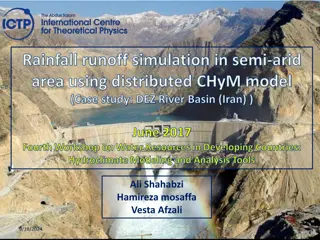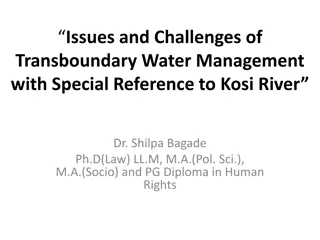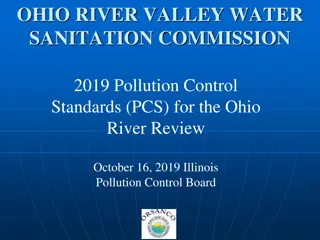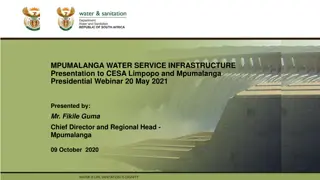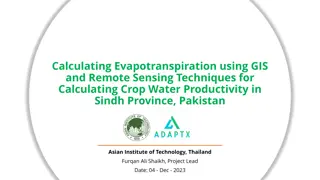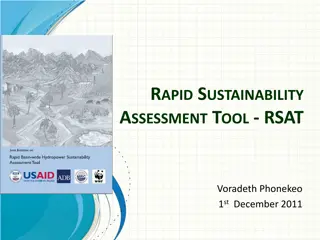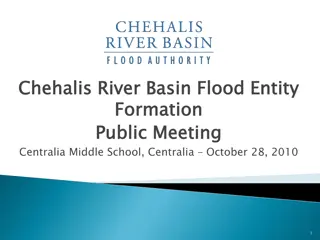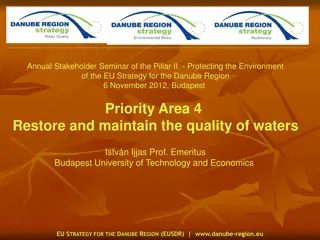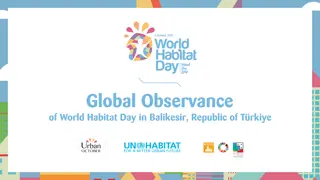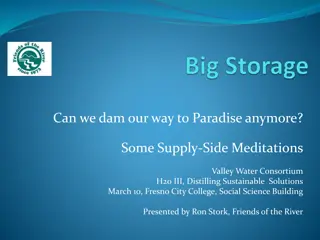Addressing Urban Sprawling and Water Environmental Problems in Huangshui River Basin, Qinghai Province
This research focuses on the impact of urban sprawling on the water environment in the Huangshui River Basin of Qinghai Province. It examines the challenges faced and the application of L-THIA-Q in addressing these issues. The study highlights the origin of cooperation, research schemes, and the main challenges encountered. It delves into the hydrological situation of the Huangshui River, economic status of the area, and environmental problems caused by water pollution. The proposed research aims to provide insights for sustainable water resource management in the region.
Download Presentation

Please find below an Image/Link to download the presentation.
The content on the website is provided AS IS for your information and personal use only. It may not be sold, licensed, or shared on other websites without obtaining consent from the author. Download presentation by click this link. If you encounter any issues during the download, it is possible that the publisher has removed the file from their server.
E N D
Presentation Transcript
Urban sprawling and related water environmental problems in Huangshui River Basin of Qinghai Province A brief introduction of research schemes on L-THIA-Q and main challenge of its application Zhao Xia Qinghai Normal University Oct. 21, 2015
outline of the report Origin of the cooperation on L-THIA-Q Urban related problems in Huangshui River Basin Research scheme and main challenge Progress of up-front work Planning of follow-up work
Origin of the cooperation on L-THIA-Q Cooperation discussion on provincial and state water resource sustainable development project (Jun. 2014-Feb. 2015) Professor Filly advised three main cooperation fields Professor Harbor suggested to focus on Urban and Community Water Planning and Management Ph.D. Zhao provided a research proposal of Huangshui River Basin Cooperation agreement on L-THIA-Q and relevant issues (Feb. 2015-May 2015) Determined the keywords of collaboration: L-THIA-Q and Water Pollution Loading Evaluation Won a research funding from Qinghai STA
Urban related problems in Huangshui River Basin Hydrological situation of the river biggest tributary of Yellow River in Qinghai Province, flowing through seven counties and one city with a drainage area of 16120km2, which shares 2.2 percent of total land area in Qinghai Province. Huangshui River is a multi-functional water body, which carries on drinking, irrigating, industry water supply, pollutant receiving, landscape and leisure functions together.
Urban related problems in Huangshui River Basin Economic status of the area most important and concentrated economic zone of Qinghai (affording 60% population, 52% farmland, 62% grain yield and 66% industry production) Environment problems in the area most polluted and increasing serious of water pollution the main pollutants in current are NH3-N, BOD and COD the biggest exceeding rate occurred in main stream 90% length of polluted river appeared below Xining City.
water pollution situation of year 2010 1/6 of river length are polluted and 1/3 of monitoring sections are at Grade V or worse than Grade V, and the wastewater discharge takes a share of 70% in annual provincial amount. 6 5 4 3 2 1 0
Urban related problems in Huangshui River Basin Management and research work of this river issuing Water Pollution Prevention and Control Regulations (1992), setting Water Environmental Function Zoning (2004), instituting Comprehensive Governance Agency of Xining Section (2011) and starting regulation projects of Comprehensive Watershed Treatment and Beichuan River etc. most research focus on contamination status or pollution level, fewer of them used mathematical model to predicting pollutants discharging amount but none attempted to explore link mechanism between land use change(especially, urbanization and modernizing agriculture) and water pollutant impacts.
Research scheme and main challenge Research area Beichuan River Basin (3371 km2of drainage area) Instead of Huangshui River Basin(16120 km2) in view of data availability and feasibility of model calibration and application Research objectives Develop a GIS-rooted model of L-THIA-Q which can be used as decision making tools of watershed management in Qinghai Province Choose a typical river to do some explorative work of water pollution loading evaluation based on concept of TMDL.
Progress of up-front work Works we have done: Evaluation data demands of model building data of LUCC, soil type and daily or monthly runoff design a questionnaire Including three questions of water environment, two questions of water resource, two questions of land use planning and two questions of water modeling data of hydrologic features visiting relative institutions Including Remote Sensing Monitoring Center and Bureau of Hydrology and Water Resources of Qinghai Province, Environment Protection Agency of Xining City and Huangshui River Basin Commission(Xining Section) etc.
Progress of up-front work Some thing we have found: identifying management requirements is very critical Cause it is often hard for researchers to produce decision support tools that are actually used by planners, managers and decision makers(quoted from Professor Harbor ,Nov.24, 2014 at Xining Symposium) But there are several departments that hold on water resource management at same time, who should we server for? Long-Term Hydrologic Impact Assessment, especially based on the scenario analysis of land use planning is deserved to do, but the result is very difficult to be adopted by the decision-making departments right now.
Planning of follow-up work our goal of L-THIA-Q: to develop a Practical Decision Support Tools in Hydrology and Water Quality which is applicative and useful in Qinghai, Which should be a GIS-rooted model tools that can help decision makers to analyze and display the implications of different decisions they are trying to make Which can meet the of evaluation accuracy and sustainable management demand of water resources on the premise of data availability.
Planner and Environmental Managers Approach to Model Use Scientists Approach to Model Development Generalization Maximum complexity Small Scale Highly data intensive Specification Simple to use Large Scale Readily Available Data The Answer to a Specific Question (=Decision) with the Best, Easy-to-Use Model, Using Data I Already Have The Best General Model our Science and Research Grade Data Can Support
L-THIA is one example of a decision support tool Qinghai Normal University is excited to be working with excellent researchers at Purdue University to pursue a project that will promote sustainable water resource development in Qinghai.
End of the presentation Thanks for your attending Welcome questions and suggestions Reporter: Ph.D. Zhao Xia Geographic Science Department Qinghai Normal University E-mail zhaoxia-qh@163.com Mobile phone: 13997060081 Address: No.38 West Wusi Road, West City District, Xining, 810008.
